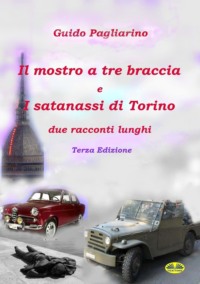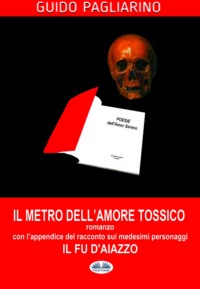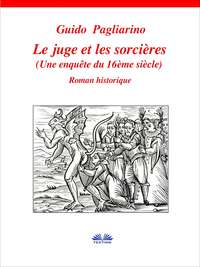
Полная версия
The Rage Of The Reviled
"Let’s hope they grant her mental semi-infermity," Bordin had agreed.
"Let's hope so; but apart from that, you can go to the vehicles depot for me now with this service sheet... here: it’s my authorization to pick up a car with driver. Then go and check is Esposito is known in Vicolo Santa Lucia." He had also given him the suspect’s license: "Show this photo to the mother, that’s if she exists, and to the neighbors as well, and gather as much as you can on him."
"Yes, sir! On the way back though, Commissioner, maybe I could go to my room to sleep because I’ve already completed my hours of service for today."
"Duty and sacrifice is our motto," he had responded smiling.
Since Police Headquarters knew that the social temperature in the city was climbing and an uprising was quite likely, the brigadier had decided to go by the radio room to get some news on the situation outside before going to the garage. As soon as he had heard it, he had returned to his direct superior and told him that patrol trucks had communicated that isolated gun battles had begun. He concluded asking: "Sir, do I really have to go there today, or can I wait for tomorrow, when maybe things will have calmed down?"
Before D'Aiazzo had decided, the rumble of the diesel engines of vehicles had started to come up along Via Medina where Naples Police Headquarters were located, and still are, and were going past the main entrance of the building in column, as they had done every day for two weeks. It was a motorized platoon of German grenadiers going to relieve another one, of the same battalion, sent to guard a corridor on the top floor of Castel Sant'Elmo, a mighty bulwark that stands on the Vomero hill at 820 feet above sea level overlooking the Gulf and the city. Two non-communicating rooms opened onto that corridor and, at that time, were used as the armory of the fortress. One of them was a large room with conventional weapons and ammunition stored there and in the other, a smaller space, the secret armaments of Italian design and production were guarded.
The weapons were kept under surveillance around the clock in two shifts, from 8.30 am to 8.30 pm and 8.30 pm to 8.30 am. The Germans had occupied Castel Sant'Elmo since September 9, and had seized the armaments, with particular interest in the special ones. The castle itself was a primary target for the Allies in those days precisely because of these unconventional weapons, and for some time their own secret services had been interested in it.
Vittorio D'Aiazzo was about to tell his subordinate to ignore his previous order and to go and get some rest, when there were gunshots from Via Medina, first from rifles and a light machine gun, then, in rapid succession, an assault rifle and a machine gun.
Deputy Commissioner and assistant had instinctively ducked then, with their legs bent, had moved to the window and peeked out to look below, showing themselves as little as possible.
At the same time, several other policemen had looked down from their respective offices, both the staff coming off duty and those coming on, as it was chngeover time, 8.00 am on the dot. Having just arrived, the deputy Head of Police Remigio Bollati had also glanced surreptitiously out his window; his office opened off the same corridor as Vittorio's and the two rooms were next to each other.
Depending on the position of his window and as he looked down, he had seen or glimpsed the German platoon standing still in the middle of the road about fifty yards past the front door and the neighboring driveway. From the shelter of their vehicles, lined up transversely, they were engaged in a gun battle with people who had to be further down the street that couldn’t be seen from the Police Headquarters building, but the gunshots coule be heard very clearly. It could be assumed that they were taking cover behind the walls in ruin and the piles of rubble of two nearby buildings facing each other, bombed a few days before September 8 by American fast-response fortifications.
Chapter 4
To better understand, let's go back a little:
With the Neapolitan Revolutionary Single Front having been formed, and given the reluctance of the Prefect Soprano to take charge of it, the seventy-year-old laborer Antonio Taraia had been elected to head it. On September 24, considering the situation now ripe for the insurgence, he had called a meeting for the following morning in the Sannazaro high school, so as to put the decision about it to the vote. He had arrived at the conviction that it was now time to act, not only because of the news that the Anglo-Americans were now almost at the gates of Naples which he had received in advance from the philosopher Benedetto Croce who had heard it confidentially from Dr. Soprano, but also because, following coded agreements made by radio with the Americans, weapons and two-way radios of the US Army intended for the partisans had just been parachuted in at night, near Naples.
They had been hidden immediately afterwards in seven cellars in as many different areas of the city; the operation had taken place with the essential contribution of a group of bribed camorristi, ready to run serious risks in view of the very high earnings promised to them by the Americans. We should not be surprised by this alliance, the United States had already availed themelves of, and continued to use the mafia’s help in occupied Sicily where, among other things, numerous new notoriously mafia mayors had been installed by the conquerors. The camorra, as well as the Mafia, was organized in an almost military fashion and, in particular, had many large trucks available in Naples.
The arms operation had been meticulously organized by the Americans; among other things, instruction leaflets on the use of the parachuted weapons, written in correct Italian, had been taken to the Sannazaro high school by some American agents who had crossed the lines at night. In this way the Neapolitan patriots could be theoretically instructed on their operation by the agents themselves, which would make the practical instruction faster and easier. For logistical reasons, this would take place just a little before the uprising, at the moment the weapons were recovered from the seven storage places.
At the meeting of September 25, the decision to rebel was unanimous. Around noon, messengers had been sent to tell the custodians of the American war material.
The following day, Sunday, seven leaders of patriot groups who had already assisted at the storage of the weapons in the secret places, had presented themselves not long before curfew time, one at each storage room, to prepare the weapons to be collected the same night by their men, who would arrive at the hiding places around 5.00 am on Monday, September 27.
So, after 6 am on that same day of September 27, having collected their weapons, the groups of freedom fighters had headed to their targets. While the platoons trained in the Sannazaro High School by the American agents were carrying U.S. weapons, namely M1 Garand semi-automatic rifles and BAR M1918 Browning machine guns that used the same 7.62 caliber projectiles, Mk2 pineapple hand grenades and M1 bazooka portable anti-tank rocket launchers, the other groups of insurgents had weapons captured from the Germans in the clashes during the early days, namely Mauser Kar 98k rifles, MP80 assault rifles, 24 hand grenades and Panzerwurfmine grenades with their Panzerfaust anti-tank bomb launchers; there were also personal knives or taken from domestic kitchens and some double-barrelled shotguns previously secreted in cellars or attics by their fond hunter owners after the German occupation,.
That morning, however, the first gunshot had not been preordained. On the contrary it had ignited spontaneously at the Vomero by relatives of people that had been rounded up. They had stopped an off-road Kübelwagen Typ 82 of the Wehrmacht, killing the marshal who was driving it and putting the other soldiers to flight; other non-organized actions had taken place around Naples soon after and, here and there, carabinieri on patrol and officers of Public Security and the Guardia di Finanza had spontaneously joined the rebel groups.
Shortly before the start of school lessons, ten unarmed high school students had thrown themselves, on the spur of the moment, at three Germans who were on patrol in their Kübelwagen, proceding at walking pace. They had forced them to get out, disarmed them and set fire to their off-road vehicle, while the Alemannic threesome had fled. Those Germans, however, had raised the alarm with their department, and two German platoons had arrived with the support of a powerful sdKfz 231 Schwere Panzerspähwagaen 6 rad armoured car. The ten young people had taken refuge and barricaded themselves in the nearby San Martino Museum and the armored vehicle had begun to strafe the windows, as news of the students’ action and the danger they were in was spreading through Naples, echo after echo.
Among the actions which, instead, the Resistance had prepared, were first of all the well-known attack on the column of German grenadiers in Via Medina and the action of a platoon of carabinieri who, with their colonel commander’s approval had headed to the San Martino Museum aboard a Lancia CM truck23 to fight the Germans were besieging the rebellious students with their short 91muskets and SRCM 3524 hand grenades. Some civilians in the area had spontaneously placed themselves at the side of the Benemerita military.
That same morning, still in response to the democratic leaders’ previous order, one hundred freedom fighters had attacked Castel Sant'Elmo. Inside, among the Germans barricaded there, was the tired platoon of grenadiers who had remained on guard at the armory the whole night, without being relieved because, as we know, the fresh platoon coming on duty had been engaged in combat in Via Medina.
As the pressure of events increased, the post commander, Colonel Scholl, had moved his powerful Tiger- and Panther-class panzers, but a number of them had been blocked and set on fire by rioters, thanks to a few panzerfaust25 stolen from the enemy, American bazookas and Molotov cocktails.
Chapter 5
As the gun fight in Via Medina continued, the head of Police Headquarters, Dr. Carmelo Pelluso, having moved away from the window of his office on the first floor, from which he had cautiously watched the German platoon engaged in combat, was about to call his Deputy Commissioners by intercom to give orders regarding it, when the phone on his desk had started ringing.
At the other end of the line was his direct superior Dr. Soprano. The Prefect had reported to the Chief Commissioner that armed conflict had begun in several areas of Naples and had told him the news that the American armed 5th and the 6th Corps as well as the British 10th were attacking the Germans in the direction of Naples and Avellino and the German units in the field were beginning to fall back, bypassing the Neapolitan city, to consolidate their lines further north. He had concluded by leaving the Commissioner in Chief free to decide which concrete orders to give his men, but with the constraint of not forcing them to fight the Germans.
Dr. Pelluso had not obeyed completely: after saying goodbye to the Prefect, he had indeed commanded his deputies to give their subordinates the simple invitation, not the order, to join the population against the Germans, but he had added decisively: "Tell everyone that I personally am on the insurgents’ side; however anyone, for mere hypothesis, who does not want to follow me will not be in any trouble; he will though have to hand over his gun and remain clonsigned to Police Headquarters in the holding cells."
Carmelo Pelluso was not an anti-fascist of the first hour: like many others, including Deputy Commissioner Vittorio D'Aiazzo, he had carried the Fascist Party card until July 25, mandatory in reality for public officials. He had, however, already joined the Action Party at the end of that month and had not changed sides after the German occupation and the very recent return of Mussolini to the Government of the part of Italy not occupied by the Allied armies. On the contrary, he was now actively collaborating with the leaders of the anti-fascist parties of the Single Revolutionary Front and, first and foremost, with one of its leading exponents, who was also his personal friend, the azionista26 Professor Adolfo Omodeo. On September 1, the latter had been appointed as rector of the University of Naples Federico II by the Badoglio Government. From there he fueled the rebellion against Nazi-fascism among the intellectuals, together with the liberal Benedetto Croce.
The policemen loyal to Mussolini, a commissioner and a dozen agents, graduates and non-commissioned officers had been disarmed and, under the direct control of the chief commissioner, had been locked up, respectfully but under armed escort, in the holding cells. Pelluso had inquired if there were already other prisoners in those rooms and had been told that the only one in a holding cell was a certain, real or presumed, Gennaro Esposito, suspected of the murder of a prostitute named Rosa Demaggi. The commissioner in chief had looked very disappointed.
In those same minutes, Vittorio D'Aiazzo was leaving the barracks from the driveway, at the command of an old, obsolete armored vehicle belonging to Police Headquarters. He considered himself a Christian demoliberal in pectore even though, after tossing away the Fascist card on July 25, he had not joined either the Catholic party or the Liberal party and, unlike the chief commissioner Pelluso, had not made contact with men of the newborn Resistance. On the other hand, that was how it was for the great majority of those Italians who would then fight Nazi-fascism, for over a year and a half, until the end of the war.
Brigadier Marino Bordin had climbed aboard the armored car with Vittorio D'Aiazzo even though, like him, he was tired out from the sleepless night. He was a courageous but rough man and, despite not having political ideas, he harbored deep animosity for the Germans because of their contemptuous arrogance towards the Italians. Two police officers had also boarded the armored vehicle, Tertini and Pontiani, and the ordinary marshal Aroldo Bennato, head mechanic of the police headquarters repair shop, who had placed himself at the wheel. All three were fresh after a night of rest, and had just come on duty.
The armored car, or to be precise the machine gun armoured car as it was catalogued, was a tool from the First World War, an Ansaldo Lancia IZ equipped with three 7.92 mm heavy Maxim machine guns. Only this armored car and two similar to it had not been confiscated from Police Headquarters by the occupants, having been judged no longer of any use because obsolete, unlike the most modern armored cars 611 FIAT 1934/35 and AB FIAT 1940/43 that the Teutonic tank drivers had willingly added to their armored vehicles. The Ansaldo Lancia IZ was a model which was slow and hard to maneuver. But it had considerable firepower, and in fact, when it came into service at the end of the First World War, it had made immediate destruction among the Austrians; moreover, contrary to what the Germans must have thought, the three twin armored cars had been kept in perfect efficiency thanks to periodic reviews by the workshop manager and his mechanics and, for the machine guns, by the gunsmiths.
With the five policemen on board, the armored vehicle had noisily entered Via Medina, emitting smoke, about seventy yards behind the Germans who were still intent on firing Garand rifles on the rioters, while the patriots’ BAR machine gun was now silent with its operator slumped face-down over it, dead. The number of attackers still alive had been reduced to less than half, since the Germans had a so-called Hitler's saw, a tremendous 7.92 mm MG 42 machine gun, the best in the world for performance and lightness. In fact, even today in the 2000s, the model is supplied to NATO27 ; and for every ten bullets inserted into the tapes by the Teutonic machine gunners, one was an armor-piercing type, capable of breaching the crumbling walls and piles of rubble of the two bombed houses, from the cover of which the patriots were firing. Some Germans too were dead on the ground, a small part of their platoon.
Vittorio D'Aiazzo had ordered the warrant officer to stop the vehicle and the police officers to get behind the two machine guns, as he himself got behind the third. The trio had armed, aimed at the enemy grenadiers and, at their superior’s order, had opened fire non-stop despite the risk of jamming the weapons. The three improvised machine gunners had eliminated the enemy platoon, whose men had not had been in time to turn their armor-piercing bullets against the Italian armored MG, though they could have had the better against the slender coverage of the Italian vehicle. Above all, they had not been able to launch an anti-tank bomb with a Panzerfaust, with which they were equipped.
After the massacre of Teutonics, the armored car had slowly resumed its passage, winding its way past the dead and the enemy vehicles; due to insufficient space it had pushed a small truck out of the way. About forty yards away the surviving patriots, only six people, none of whom had been hit, had emerged from the rubble and had come out into the open to meet the armored vehicle. There were five men and a small slender woman who looked no more than eighteen, on her face an expression of contempt.
When the armored arrived about ten paces from the small group, Vittorio had given the order to stop. He got out with three of his men, leaving the wrrant officerl on board at the radio. The policemen and partisans had taken care of the Italians on the ground, sixteen of them, none of whom gave signs of life. Six of them were in appalling condition, four almost sawn in half by bullets from the MG, the fifth was missing the face, replaced by a bloody cavity, the sixth deprived of the skull cap so that you could see his brain and cerebral matter which had come out of his nose had set on his mouth and chin.
The girl had been beside the latter during the fight, and had told D'Aiazzo that the man's brain had pulsed for a while after suffering those devastating blows; impassive, she had concluded the gruesome report saying: "I don’t know if he was still conscious, because he was immobile, but I think so."
"I really hope not!" the Deputy Commissioner had replied rudely, annoyed not so much by the macabre description, but by the coldness that the young woman had shown.
One of the Italians killed had a small bag made of jute slung across his chest which held a US Motorola Handie-Talkie SCR536 one-way radio, light but not powerful; still showing no feeling, the girl had taken it from the deceased and had put it on her shoulder. She had then examined the corpses of the Germans one by one, very carefully, and when she had finished the inspection, her face had darkened.
Vittorio had ordered the removal of the deadly MG machine gun from the tripod with its ribbons of bullets, and had explained that once it had been taken off the support, that weapon could perform very well as a submachine gun, because it was not very heavy, just a few dozen pounds, and the bipod folded under the barrel could be lifted up. The girl had appropriated it, putting down her Garand rifle, saying that she knew how to use it. She had put two ribbons of MG bullets across her body bandolier-style and the machine gun on her right shoulder, her hand on the barrel to keep it balanced.
D'Aiazzo had grabbed the dangerous Panzerfaust and asked: "Do any of you know how to use this thing?" He had had a yes from one of the six who, although he was in civilian clothes, had declared that he was a grenadier and had explained that he had been "caught by surprise here in Naples by the armistice."
A moment later the warrant officer had leaned out the door of the armored vehicle and told his superior that he had picked up the news from the radio room of Police Headquarters, that a female voice had telephoned their switchboard reporting that Germans were machine-gunning the houses in Piazza Carità.
Vittorio had decided to intervene. Since the armoured car could accommodate up to six people, he had asked the young woman if she wanted to get in. She had refused and, given the urgency, he had not repeated the invitation, and ordered his men to get on board. He was the last to get inside and had commanded the warrant officer to head to the target.
Meanwhile, many other policemen were leaving Police Headquarters to confront Germans: some left on foot through the front door or a secondary door, some via the driveway on trucks, jeeps, three-wheeled motorbikes or on board the two remaining armored cars. Most of them had nineteenth-century '91muskets, some had a modern MAB submachine gun28 slung over their shoulders, many were carrying SRCM bombs or tear gas grenades in their pockets. Those cops were going to the most diverse destinations. In particular, upon chief commissioner Pelluso’s specific order, a platoon with several men in civilian clothes and the majority in uniform, had boarded an OM brand flatbed truck and headed towards Piazzetta del Nilo, only a kilometer away from Via Medina: also on that truck, in the cabin next to the driver, was the alleged sergeant major Gennaro Esposito.
The armored car under the command of D'Aiazzo had set off again, clanking and sputtering, with the six patriots walking behind it. Warrant Officer Bennato drove it slowly, not only because of the vehicle’s age, but so the partisans on foot who were using it as a kind of bulwark, could keep up with it without tiring themselves. After the first hundred yards or so one of the six, looking at the minute build of the young woman, had offered to exchange the heavy MG with his own rifle, but she had refused annoyed and snarling "Naah" which, to all intents and purposes, must have meant no.
As they approached Piazza Carità, the eleven patriots had heard volleys of machine gun fire. Two minutes later, the echoes of assault rifles had reached their ears followed by a detonation. After another couple of minutes, more volleys of machine gun fire were heard and little by little as the armored car approached, the crackle had become louder. They had almost arrived at the square, and it was now beyond doubt that the shooting was taking place right there.
Vittorio had ordered Bordin and the two police officers to go to the machine guns and arm them, and to be ready to shoot at his command. He had gone behind a forward embrasure to watch what was happening outside, ready to order them to open fire.
Конец ознакомительного фрагмента.
Текст предоставлен ООО «Литрес».
Прочитайте эту книгу целиком, купив полную легальную версию на Литрес.
Безопасно оплатить книгу можно банковской картой Visa, MasterCard, Maestro, со счета мобильного телефона, с платежного терминала, в салоне МТС или Связной, через PayPal, WebMoney, Яндекс.Деньги, QIWI Кошелек, бонусными картами или другим удобным Вам способом.










